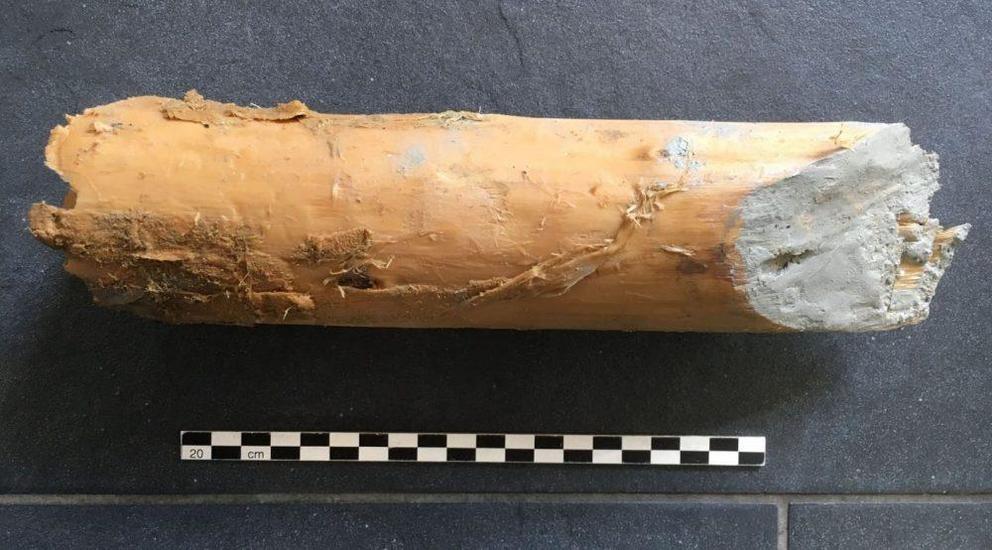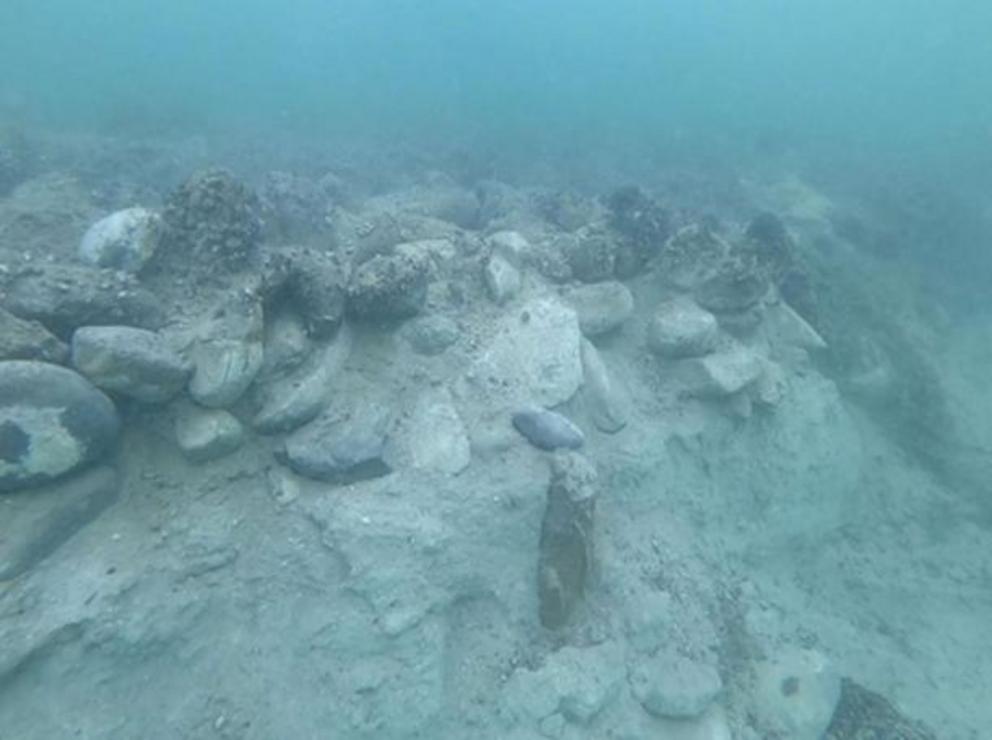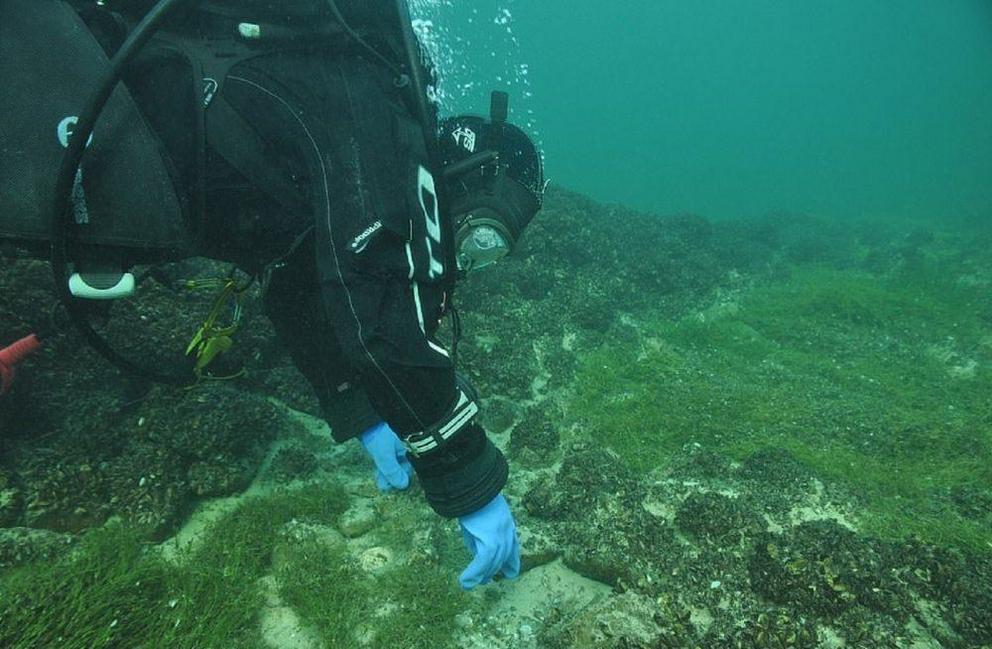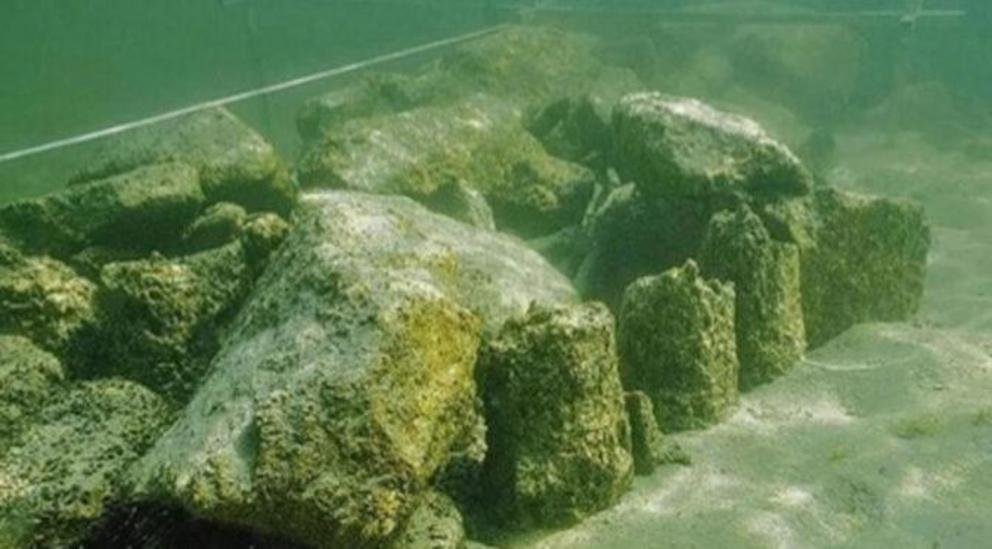Underwater Stonehenge that predates the pyramids confirmed in Switzerland
Archaeologists studying Switzerland’s Lake Lucerne have unearthed the remnants of a submerged Bronze Age village, suggesting people occupied the Lake Lucerne area 2,000 years earlier than previously thought.
As Swissinfo.ch reports, the new finds suggest that the area around the lake was settled 2,000 years earlier than previously thought.
Though researchers have long searched for proof of early habitation in the Lucerne region, a thick layer of mud had obscured traces of the village until recently.
As Per a statement from the local government, the construction of a pipeline at Lake Lucerne offered underwater archaeologists the chance to examine the lakebed up close.
The first dive took place in December 2019; between March 2020 and February 2021, reports Swissinfo.ch, the team recovered about 30 wooden poles and 5 ceramic fragments at depths of roughly 10 to 13 feet.

A piece of Poplar wood retrieved by the divers which may have been used as part of the construction or excavation of the rocks.
“These new finds from the Lucerne lake basin confirm that people settled here as early as 3,000 years ago,” says the statement, per Google Translate. “[W]ith this evidence, the city of Lucerne suddenly becomes around 2,000 years older than has been previously proven.”
Experts used radiocarbon analysis to date the artefacts to about 1000 B.C. when the lake level was more than 16 feet lower than it is today, writes Garry Shaw for the Art Newspaper.
According to the statement, these conditions “formed an ideal, easily accessible settlement area” around the lake basin.

The Archaeology Office of the Swiss Canton of Thurgau described the findings as ‘sensational’ after carrying out extensive excavations on the lake bed.
The team identified the wooden sticks found at the site as supports used in pile dwellings, or prehistoric coastal houses that stood on stilts. Dwellings of this kind were common in and around the Alps between 5000 and 500 B.C., notes Unesco, and can provide researchers with useful insights into Europe’s Neolithic period and Bronze Age.

A diver inspecting the underwater site
“The wood is very soft on the outside and hard on the inside,” archaeologist Andreas Mäder tells Swiss Radio and Television (SRF), per Google Translate. “Something like that is typical of prehistoric piles.”
For now, the scholars’ research is limited to the trench surrounding the underwater pipeline. Traces of other submerged settlements are likely hidden nearby, but the team will need additional funding to investigate the area further.
As Heritage Daily reports, Lake Lucerne is a 44-square-mile body of water that reaches depths of up to 1,424 feet. Per a second government statement, the city of Lucerne itself was established 800 years ago.
Written records indicate that humans had settled in the area by the eighth century A.D., but until now, archaeological evidence of earlier habitation was scant.
Lake Lucerne’s water level rose significantly in the millennia following the submerged village’s peak, with a weather-driven increase in rubble and debris buildup exacerbated by medieval residents’ construction of watermills and other buildings. The lake likely reached its current level during the 15th century, according to the statement.
The archaeologists’ announcement coincides with the tenth anniversary of Unesco adding “Prehistoric Pile Dwellings around the Alps” to its World Heritage List. In total, wrote Caroline Bishop for Local Switzerland in 2017, the listing includes 111 sites across Europe, including 56 in Switzerland.
As Unesco noted in a 2011 statement, “The settlements are a unique group of exceptionally well-preserved and culturally rich archaeological sites, which constitute one of the most important sources for the study of early agrarian societies in the region.”

